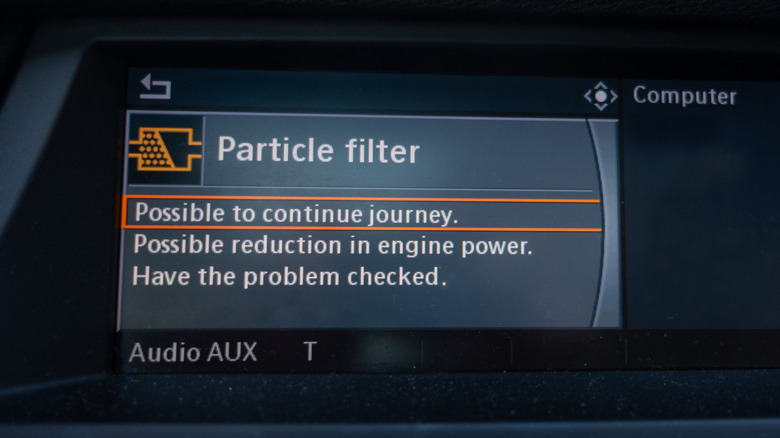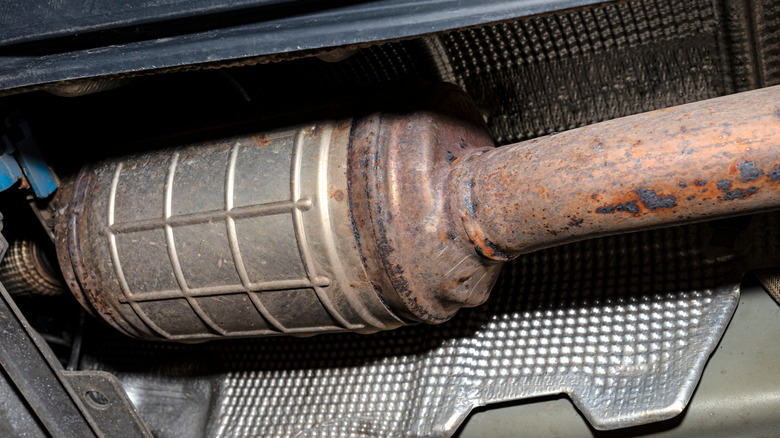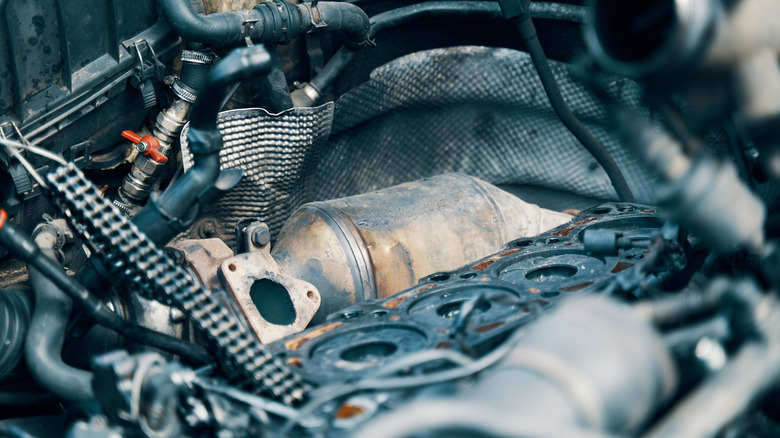
To paraphrase Pete Townshend of The Who, we're not trying to cause a big sensation; we're just talkin' 'bout regeneration. DPF regeneration, that is. It's the process of cleaning a diesel particulate filter (DPF) by using hot exhaust gases to burn off built-up soot particles.
Now, to be clear, it's those gases that leave behind the soot in the first place. But enough driving can heat up the exhaust to the point where the leftover soot actually combusts — about 600 to 650 degrees Celsius (1,112 to 1202
degrees Fahrenheit). This breaks down the particles into carbon dioxide and water vapor that can slip through the filter to reduce buildups.
Regeneration is key to getting the most out of a diesel engine, since a clogged DPF can drastically reduce a vehicle's performance and efficiency. They aren't cheap, either: The price to replace one can reach up to five-figure territory. So proper DPF maintenance should be part of your overall diesel maintenance to keep your engine running, and it can also delay the need for a full off-vehicle DPF cleaning. That can cost up to $700 and involve the filter being baked, submerged, or vibrated to get rid of the built-up soot and ash.
Regeneration is essentially free, since the system is usually built right into the vehicle as part of its standard equipment. It's pretty easy, too, because the process is mostly automated. Nor should occasionally interrupting the cycle cause an issue. You may not even notice regeneration happening, although your engine will eventually notice if it doesn't.
Read more: The Least Reliable Cars, Trucks And SUVs You Can Buy In 2025, According To Consumer Reports
Here Are The Details Of How A DPF Regen Works

The DPF is no cheap paper item meant for one-time use. The filter is actually made of a robust ceramic material that combines impressive heat resistance and, in the latest models, the ability to capture some 99% of particulate emissions. The trapped soot has to go somewhere, though, so it's regenerated, in one of two ways.
In passive regeneration, the heat needed for soot combustion comes simply as a result of your driving. The process begins when enough of a load is put on the engine to naturally raise the temperature of the exhaust gas, and that starts burning the leftover soot particles.
However, let's say you're only making a lot of low-mileage jaunts with a lot of light loads, so your engine never runs very hot. Well, your engine hates short trips, so cars' engine control units resort to active regeneration in those cases. An active regen forces the temperature to increase by injecting some extra fuel into the flow of the exhaust gas, where it oxidizes to create heat as it goes through the exhaust system.
In extreme situations, when the filter gets too clogged and regular regens don't help, you may have to park the vehicle for what's called a forced or manual active regeneration. Just be sure you park a safe distance from other vehicles, structures, trees, etc., as some pretty hot exhaust gas will be produced.
What Happens If A DPF Regen Cycle Is Interrupted?

Stopping the regeneration process once it starts, but before it's finished, isn't inherently bad for the DPF. The concern is that stopping regeneration too early leaves soot particles behind, and they just keep accumulating and getting harder to remove. Eventually, the filter can become so blocked it affects the engine's ability to run properly. And that could cause problems.
For example, if exhaust gas has trouble getting through the DPF, it creates back pressure that forces the engine to work harder to try to push the gas out. Back pressure can harm turbochargers as well, because they're trying to shove more air into the engine, which has to fight to push it through the DPF when it's combusted. Some vehicles will put the engine into a limp-home mode or shut it off entirely if a DPF becomes too clogged with soot and ash.
There's also a concern specific to active regeneration. Remember, this involves additional fuel being injected for increased exhaust heat, and a failed regen can mean some of it remains unburned. It can then end up draining in the oil sump and contaminating your oil supply to damage the motor. At that stage, you might have to worry about regenerating your bank account to fix your vehicle: Even a simple repair can mean financial ruin these days.
Want more like this? Join the Jalopnik newsletter to get the latest auto news sent straight to your inbox...
Read the original article on Jalopnik.










